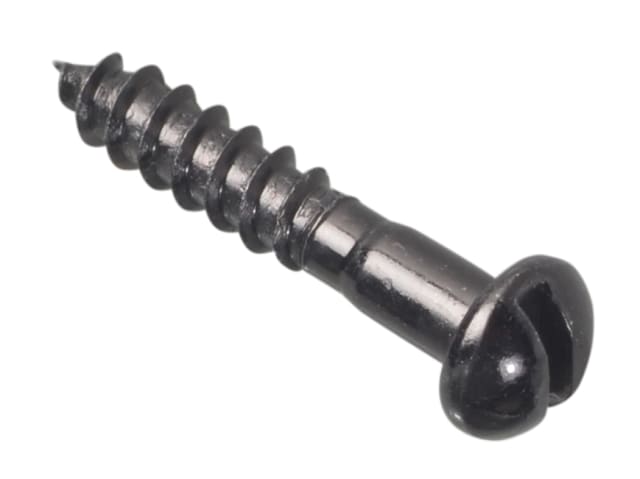How to avoid common mistakes when using screws

The work undertaken by screws and other types of fasteners is often underappreciated. They are essential in many home improvement, DIY, engineering and construction projects, regardless of how big or small that project is. Using screws correctly is the right path towards a successful project, but it is also very easy to make mistakes and this can lead to problems. So here we have highlighted the most common errors made by people when using screws in a project or application, and how you can avoid making the same mistakes.
Using the wrong screws for the material
It is true that a lot of different screws look exactly the same, and it is quite easy to select the wrong size of screw, but choosing the wrong ‘type’ of screw for the material you are working with is very much avoidable. The best example of this is with stainless steel screws. These are typically designed for outdoor use, because as a material, stainless steel is designed to prevent rust and therefore can be used to connect materials that are used externally and exposed to the weather. However, they are essentially the same screw as a brass or steel screw, just a different colour and material, so you should never use a brass screw outside. Brass screws are commonly used for internal connections, such as with DIY furniture. In this case you wouldn’t usually use a steel or stainless steel screw, because they would be more visible against wood and hence would cause an aesthetic issue, even if the connection was sound.
Using screws with the wrong dimensions
When we’re talking about screws, size matters. The purpose of a screw is to create a secure connection between two materials, or to provide proper stability. If you use a screw that is the wrong diameter or is too long or too short, then your connection won’t be secure, and yes, we are talking about millimetres of crucial difference here. This connection may fail immediately, or it could work loose over time, therefore creating a wobble, or friction damage. This could also lead to uneven load distribution. In all these cases you could eventually experience a safety issue, or damage to the materials. So make sure you understand what size screws are required, in most cases this information will be provided, and make sure you select the right size screw to subsequently use.
Using the wrong tools to insert screws
It is common to find yourself struggling to connect two materials together and you find you only have a hammer to hand and not the screwdriver you actually need. In this situation it may seem quicker and easier to hammer in a screw, but this could lead to disaster. Using an impact tool to drive in a screw can damage the thread and break the head of the screw, it can also result in the screw not connecting with the thread properly and therefore not providing an effective connection. Similarly, using a screwdriver head that is too small for the screw, could result in the connection not being tight enough. Make sure you use a screwdriver to drive in screws, and make sure the screw ‘bit’ is the corresponding size for the screw you are working with.
Too much drive
Applying too much drive to a screw is a natural thing to do when you are nervous about a connection being sufficient, and so you over-compensate and over-drive the screw. This can split wood, break a screw head, cause strain on a screw or can damage a washer, if you are using one. This can lead to uneven load distribution as well as damaging the material itself, it can also lead to gaps in your screw holes, which in turn can lead to moisture gaining access and subsequently leaks and rust. If you are actually driving a screw ‘into’ the material you are connecting, this is usually a sign that you have overdriven.
Choosing the wrong screw
Wood screws are suitable for driving into wood because they are designed specifically for this purpose. So they have a point to pierce the wood without splitting or cracking it, and they have a thread to grip the grain of the wood and secure an effective hold long term. Screws designed for metal-to-metal connections won’t have the same characteristics and therefore shouldn’t be used for wood. Another common mistake is not using screws with a countersunk head for things like furniture, or other items where physical contact is required. Countersunk screws are designed so that the head finishes flush with the material top surface when fully driven in. This is more aesthetically pleasing, but is also a safety feature. Fingers or clothes can’t get snagged on the furniture if the countersunk screw is used and driven in properly. However, if you use a cap head screw or any type of screw that has a head protruding from the surface when driven in, this will cause safety and appearance issues.
Misaligning screws
The final common error when working with screws is not driving them in straight. A screw that isn’t driven straight in the material will not be providing the maximum strength in the connection, it may also look uneven in the material, so has a visual impact too. To drive the screw in straight you need the right size screw, the right tool, sufficient space to apply enough pressure and sufficient strength to drive the screw in straight (this usually comes with having the right power tool).
So these are the most common errors and mistakes made when working with screws, and at some stage, most people have made them. So if you require any advice on avoiding these mistakes, you can contact our team at MB Direct. You can also browse our range of screws and fixings and buy online today.